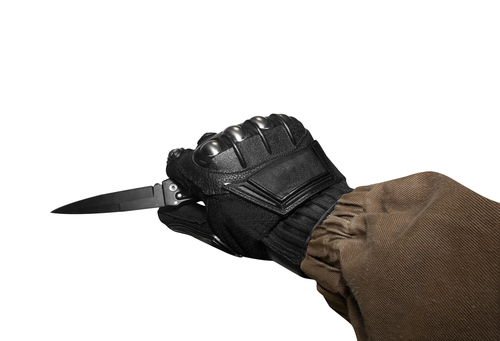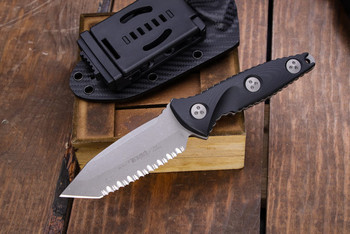Six Essential Safety Tips for Fixed Blade Knives
Aug 14th 2018
There are many reasons why some people prefer fixed blade knives over other types of knives, especially for outdoor enthusiasts, wilderness trekkers and avid hunters.
To start, fixed blade knives are appealing to those who require tactical knives that can withstand heavy-duty labor and high-impact tasks. Cutting wood, whittling tools, prying cans open, spearing fish, skinning game–these are all possible with a professionally crafted fixed blade because they triumph over other knives in durability and strength.
But just because the fixed blade knife is well-made doesn’t mean you’re safe from accidents, especially if you consider the reasons why people purchase these knives. Not only are the actions seemingly dangerous, but you will also be in an unfamiliar environment with external influences.
Here are six fundamental safety tips when handling fixed blade knives:
1. Get a Proper Sheath for Your Knife
There’s a reason why people make sheaths, and it’s not just so your knife can look pretty. Since fixed blade knives don’t have the safety capabilities of folding knives, you need external assistance. Investing in a proper high-quality sheath for your knife is crucial on ensuring safety while protecting it from corrosive or chemical erosion.
Buy a sheath that fits snugly, not loosely, so you don’t accidentally grab the sharp end without it being on. Having fixed blade knives with a sheath will help prevent many unwanted accidents, and if you find a sheath that attaches to your belt, even better.
2. Make Sure Your Blade Is Always Sharpened
For new knife users, a dull knife can be more dangerous than a sharp knife because it requires the user to apply unnecessary force and pressure.
Think about when you cut an onion: The exterior layer is smooth to the touch and often slippery, so it needs extra traction and friction for a knife to break through. If the blade is dull, it’s likely that the knife won’t break through when you apply normal pressure, forcing you to use more pressure, which can then lead to you slipping and cutting your hand.
3. Don’t Use Your Body to Test Your Knife
Segueing from the prior point, don’t be silly and intentionally cut yourself. Even though it’s important to always test if your knife is sharp enough, never test its sharpness on your finger. Find a stick, cut some rope or slice an apple.
4. Always Point Your Knife Away from You

This may seem like common sense, but you would be surprised at how easy it is for people to become careless or forgetful as they get more comfortable with their fixed blade knives.
Angling your knife away from you is another survival skill to protect yourself, no matter what you’re doing. For example, if you’re skinning an animal or whittling some wood, make sure the sharp end of the blade is pointed away from you, not towards you. Keep in mind that you should also cut outwards, not inwards.
Even further, do not point your knife at anyone whom you do not wish to harm.
5. Be Mindful of Your Surroundings

There are innumerable moving parts and other life forms when you spend time outdoors and in the wilderness. Animals, people and uncharted territory can often surprise you, so you need to familiarize yourself with your surroundings and be on constant alert to avoid any accidents.
For instance, always keep your head up and eyes open if you are walking around holding your knife, especially if it is out of your sheath. The last thing you would want is to bump into another human being brandishing a sharp knife.
6. Keep Calm and Steady
It’s essential for you to keep a calm attitude and practice steady hands. Don’t get jumpy with strange sounds and never erratically wave your knife around. Even if you drop the knife, let it drop to the ground, so you can safely pick it back up, rather than trying to catch it midway.
Paying attention to where you are and what you are doing also minimizes personal accidents. Having a clear head can also allow you to think rationally and be more in control of your knee-jerk reactions or triggers.
Handle with Care
You need to be careful. It doesn’t matter how many knives you have or how long you’ve been using them, a small, careless mistake can lead to unpleasant injuries. Responsibility and accountability come with being a knife-owner.

